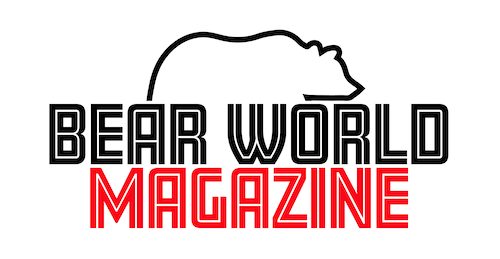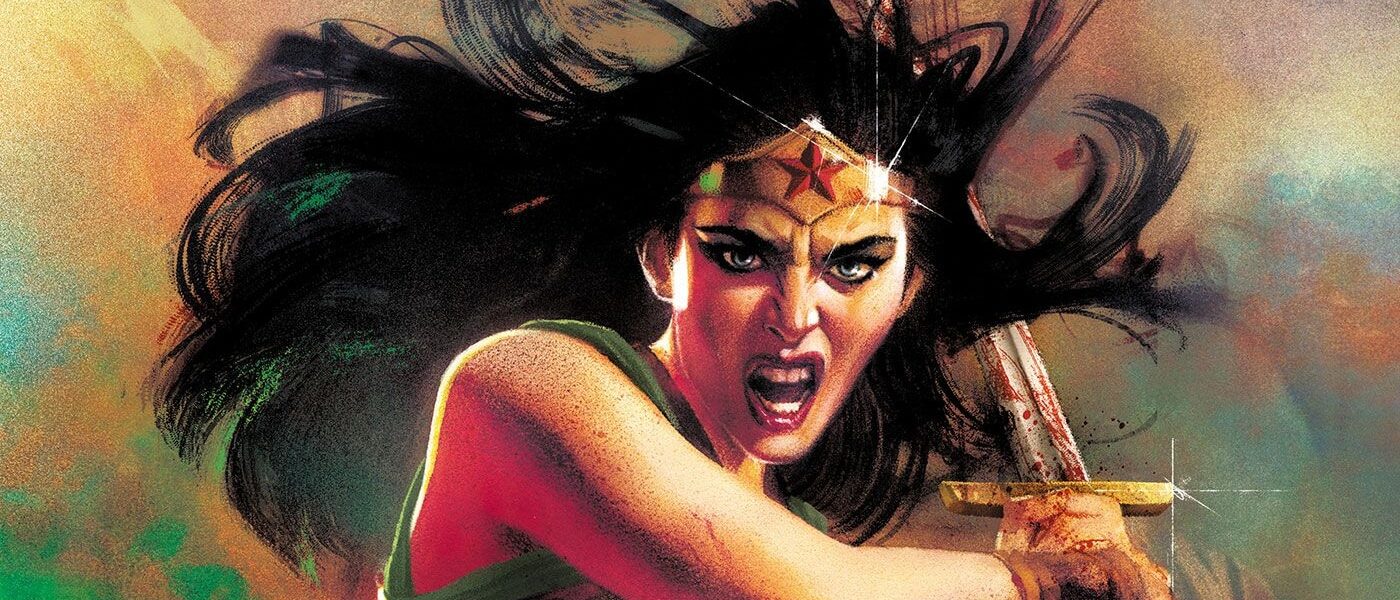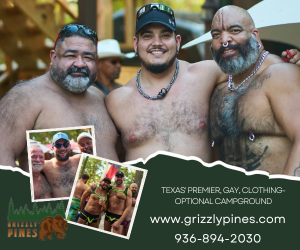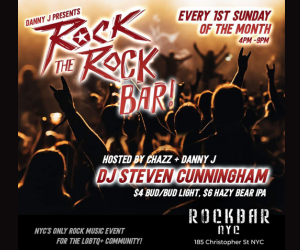Comics Corner – Give Wonder Woman an actual girlfriend, already
It sometimes feels like swings and roundabouts when it comes to covering DC’s queer comic developments. One week the publisher is on the cusp of something that resembles an LGBTQ+ utopia, the next it’s doing what feels like gaybaiting.
This week, it’s unfortunately the latter, with the news that Wonder Woman has a girlfriend in Dark Knights of Steel #2, written by Tom Taylor, with art by Yasmine Putri. The series reimagines DC’s heroes in the style of medieval fantasy, the familiar timeline of the DC Universe branching when Krypton explodes but, rather than simply rocketing baby Kal-El to Earth, the once-and-future Superman’s father and mother cram into the escape vessel too. Crashing on an Earth still in its Middle Ages, the now-godlike Kryptonians, empowered by the yellow sun, take over what seems to be a sizeable portion of the world.
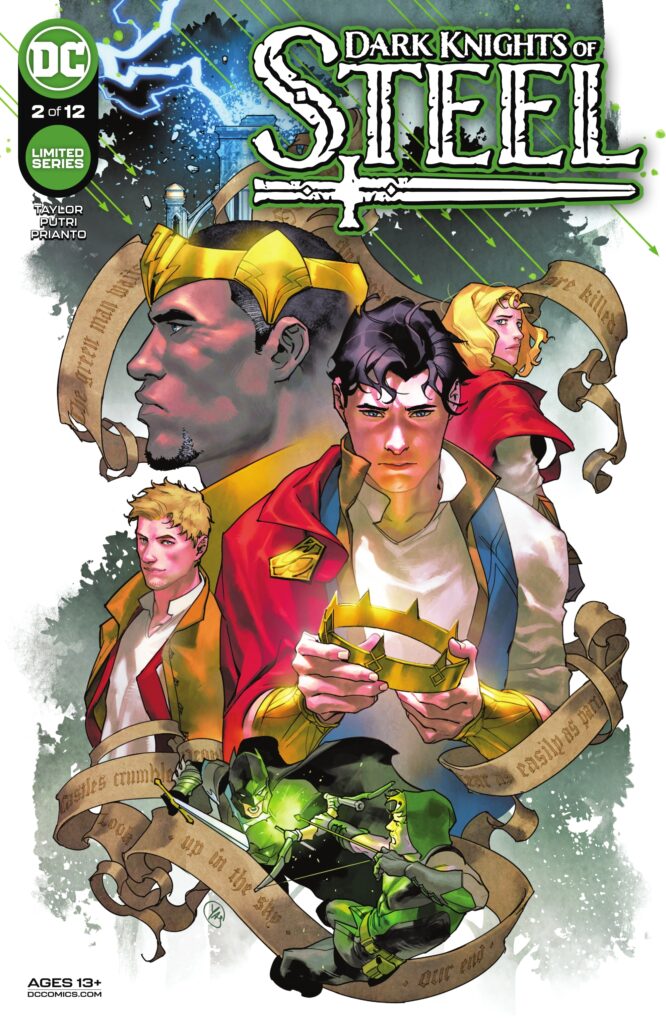
While plenty of the characters are reimaginings of recognisable DC figures – albeit with some very interesting twists for several of them, including a certain Dark Knight – others are brand new creations, with no equivalents elsewhere in the DC Multiverse. One is Zala Jor-El, Kal-El’s sister, conceived and born on Earth. Zala makes her debut in issue two, where she is shown to be in a relationship with Diana of Themyscira, this world’s Wonder Woman.
Normally, this would be something we’d celebrate, but unfortunately it’s the latest in a long tradition of only allowing Wonder Woman to be shown to be bisexual in alternate reality stories. Despite the “main” iteration of the character being confirmed to be bi back in 2016, DC has only allowed nods and allusions to her sexuality to appear in-continuity.
Diana has had on-panel girlfriends in the past, but as with Zala in Dark Knights of Steel, they’ve all been siloed off in alternate continuities. Perhaps the most prominent is Mala, a fellow Amazon and confirmed to be Diana’s lover. While there have been multiple incarnations of Mala over the decades – the first appearing way back in 1942 – only the version introduced by writer Grant Morrison and artist Yanick Paquette in 2016’s graphic novel Wonder Woman: Earth One has been confirmed to have ever been in a relationship with Wonder Woman.

Another female love interest appeared in another 2016 graphic novel, Wonder Woman: The True Amazon by Jill Thompson. This saw a younger version of Diana pursuing the affections of Alethea, a stablewoman and, again, fellow Amazon. Unfortunately, this ends in tragedy, and this version of Diana was exiled from Themyscira as a result.
The closest readers have come to seeing the core version of Wonder Woman – the one who is published monthly as “the” Wonder Woman, regardless of whichever of DC’s line-wide continuity resets such as Crisis on Infinite Earths or Flashpoint may have rejigged that core continuity – having a female love interest is in Wonder Woman Vol 5 #2, where writer Greg Rucka and artist Nicola Scott introduced Kasia. As part of a retelling and updating of Diana’s origins, Kasia was introduced as a partner of Diana’s before she left Themyscira.
Again published in 2016 – DC leaned really hard into the idea of a bisexual Wonder Woman that year – the issue established Kasia as caring deeply for Diana and lamenting her potentially leaving Themyscira for “Man’s World”, but beyond a positively chaste kiss on the cheek and some gossip from other Amazons, barely anything was made of Diana being with Kasia. On Rucka’s earlier run on the title, in 2003, he had also introduced the character Io, an Amazon who loved Diana, but those feelings went unreciprocated.
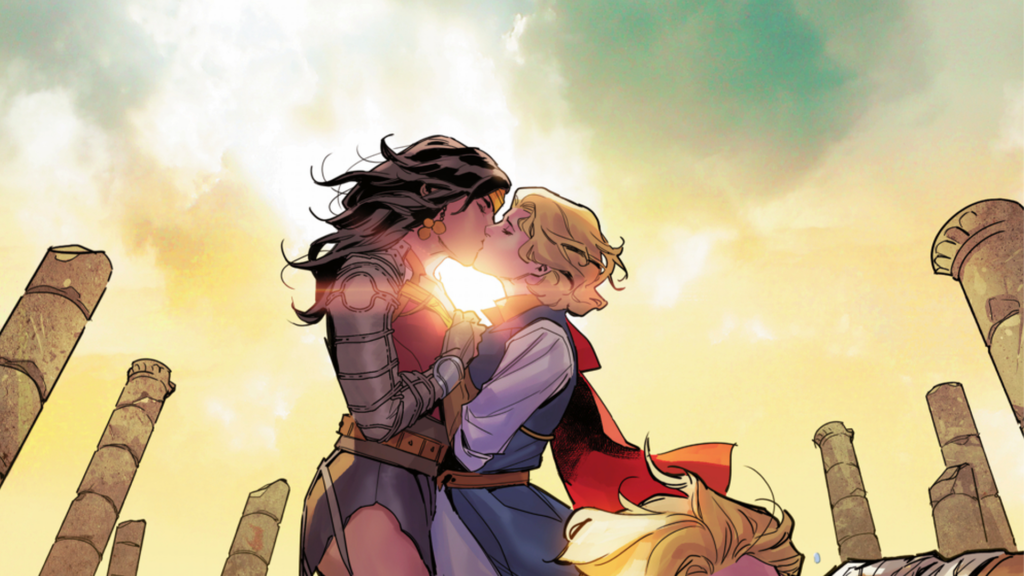
Now here we are again, with Diana having a girlfriend – one who she kisses and embraces when Zala receives some heartbreaking news, far more passionately and closely than anything seen before with female love interests – but it’s shunted to yet another divergent reality. It’s not entirely unreasonable for LGBTQ+ fans of the character to be frustrated by what feels like a series of baits and switches.
Readers shouldn’t hold this against Dark Knights of Steel itself, which is so far shaping up to be a fantastic series in its own right, or its creative team – indeed, writer Tom Taylor has significantly added to DC’s LGBTQ+ population over the last several years, helping introduce characters such as The Aerie and Wink in the pages of Suicide Squad and currently penning the Superman: Son of Kal-El series, which has revealed Jonathan Kent to be bisexual. The pairing of Wonder Woman and Zala Jor-El, as little as has been seen of it so far, is likely to be a sincere one, at least as far as this series goes – although it could certainly be in for some rocky moments as a result of some of Zala’s actions in issue two. The problem is, it’s another reminder that DC still balks at ever showing the “real” Wonder Woman as bisexual.
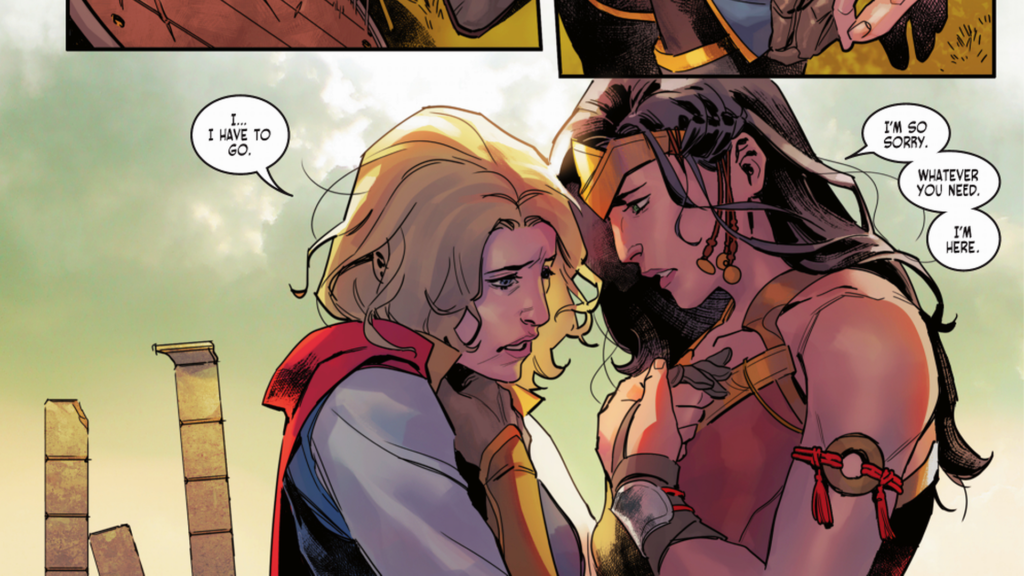
It’s all the more aggravating when Wonder Woman’s real-world origins are concerned, which are inherently queer. First appearing in 1941, the character was created by psychologist William Moulton Marston as a counter-point to male superheroes who defeated their enemies through force and violence. The idea was to turn what were typically seen as “weak” traits such as love, tenderness, and forgiveness into strengths – “a feminine character with all the strength of Superman” as Marston put it.
However, Marston based Wonder Woman on both his wife, Elizabeth Holloway Marston, and Olive Byrne – their long-term polyamorous partner. All three lived and raised children together, and Elizabeth and Olive maintained their relationship after William’s passing in 1947. The very foundation of Wonder Woman as a concept is rooted in two queer women, yet the “real” version of the character is never allowed to show this side of her.
As Alan Moore famously wrote in Superman: Whatever Happened to the Man of Tomorrow?, “this is an imaginary story – aren’t they all?” and quibbling over which version of a fictional character gets to be shown as openly LGBTQ may seem petty. But to LGBTQ fans, that lack of prominence, that trend of non-heterosexuality always being shunted to an “other” incarnation of a hero, feels diminishing and lesser.
Whether it’s in the main continuity comics or on the big screen, the romantic focus has always been on her male relationships – even though Wonder Woman actor Gal Gadot has said she believes the character can be bisexual, saying Diana “loves people for their hearts”. The male love interests are important to the character too, of course – but allowing no focus on any major female love interests in Wonder Woman’s spotlight media appearances under serves both the character and her audience.
The recently announced Wonder Woman video game, an open world adventure developed by Middle Earth: Shadow of Mordor’s Monolith Productions, may at least allow one prominent version of Diana to romance a woman, if it has romance options at all – even if that would likely under the veil of it being playersexual. However, if DC and parent company Warner Bros really want to earn the positive news cycle it’s enjoyed from the Dark Knights of Steel reveal, it needs to allow “the” Wonder Woman to have a girlfriend. It’s been almost 80 years since the character was born from intrinsically queer roots – it’s time.
